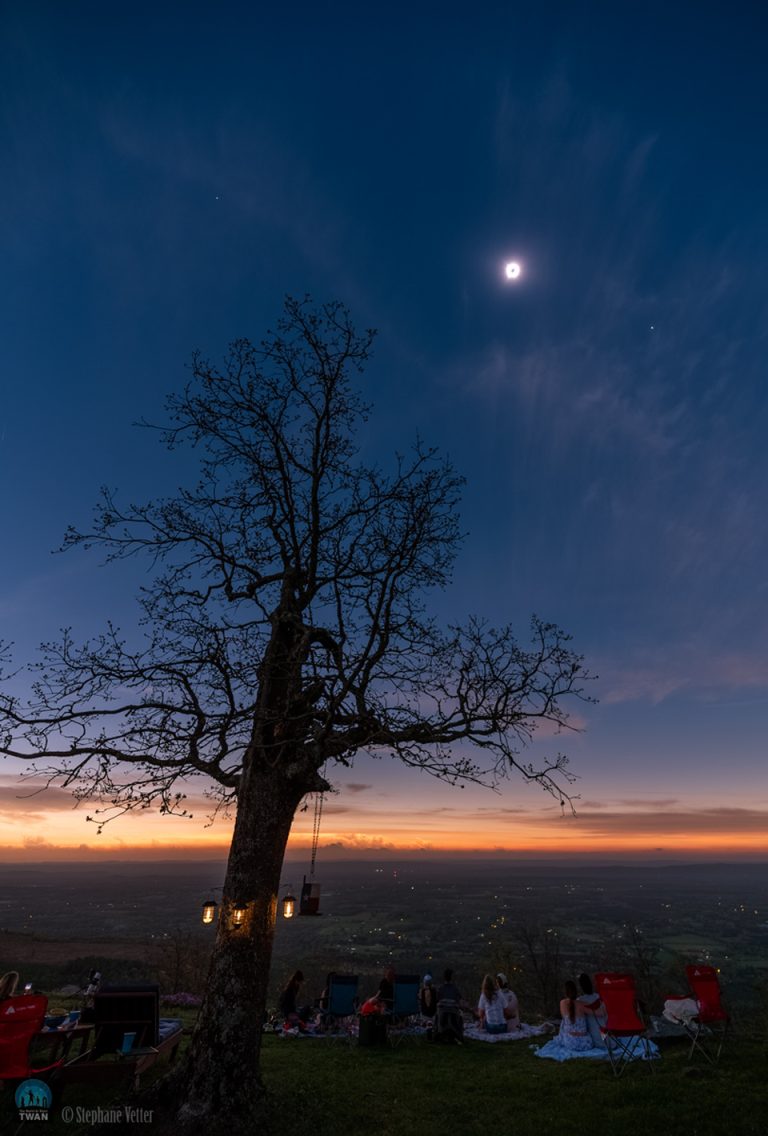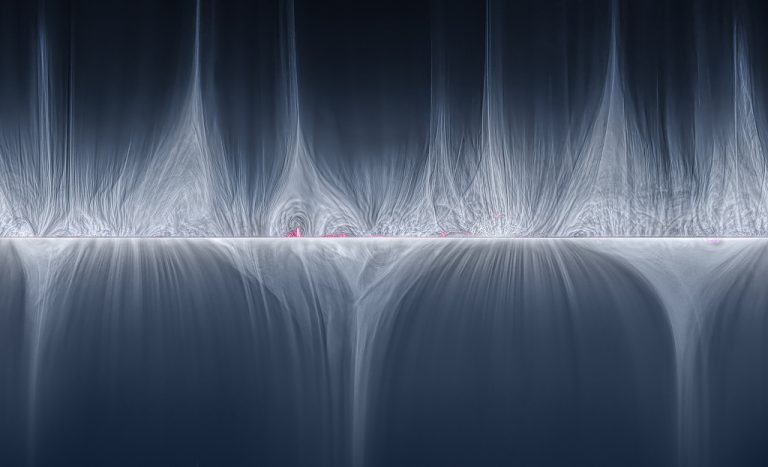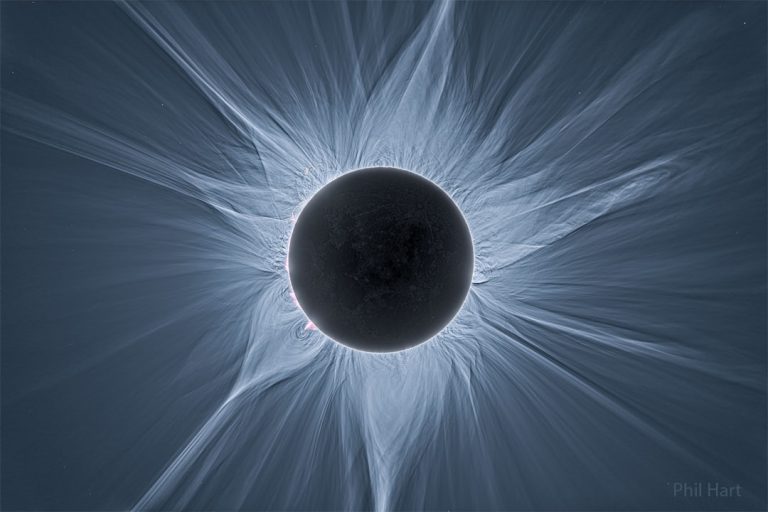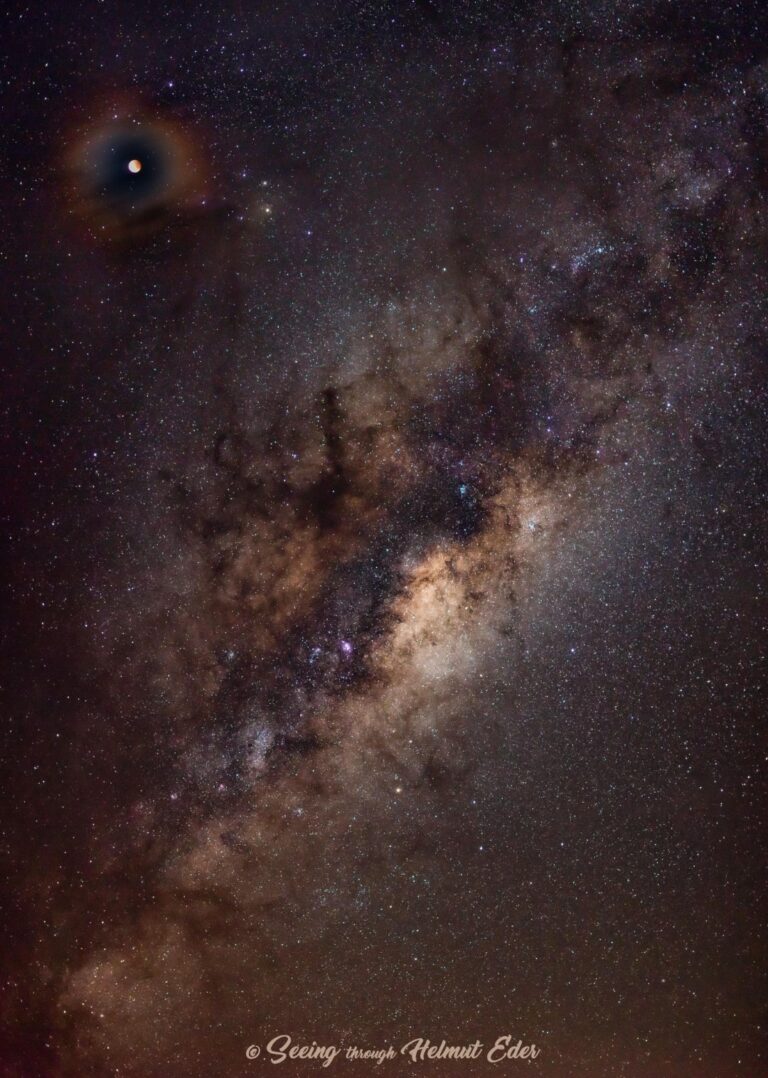巴黎上空的月华
左图为法国巴黎著名的埃菲尔铁塔,在夜晚被金色的灯光照亮。顶部发出蓝色激光。云朵点缀着背景的天空。透过云层也可以看到月亮,但它被五颜六色的光环环绕着:月华。有关更多详细信息,请参阅说明。

左图为法国巴黎著名的埃菲尔铁塔,在夜晚被金色的灯光照亮。顶部发出蓝色激光。云朵点缀着背景的天空。透过云层也可以看到月亮,但它被五颜六色的光环环绕着:月华。有关更多详细信息,请参阅说明。

在天空中可以看到一个被明亮的日冕包围的完全日食的太阳。在前景中,几个人在一棵大树旁看着它。在被遮挡的太阳的右边是明亮的金星,而在它的左边是几乎同样明亮的木星。有关更多详细信息,请参阅说明。

请参阅说明。单击图片将下载可用的最高分辨率版本。

太阳在日全食时看起来的样子。突出的是太阳膨胀的日冕,它向四面八方流出。有关更多详细信息,请参阅说明。

2023年5月16日 Total Eclipse: The Big Corona Image Credit & Copyright: Reinhold Wittich Explanation: Most photographs don’t adequately portray the magnificence of the Sun‘s corona. Seeing the corona first-hand during a total solar eclipse is unparalleled. The human eye can adapt to see coronal features and extent that average cameras usually cannot. Welcome, however, to the digital age. The featured image digitally combined short and long exposures taken in Exmouth, Australia that were processed to highlight faint and extended features in the corona during the total solar eclipse that occurred in April of 2023. Clearly visible are intricate layers and glowing caustics of an ever changing mixture of hot gas and magnetic fields in the Sun’s corona. Looping prominences appear bright pink just past the Sun’s…

2021年06月09日 A Total Lunar Eclipse Corona Image Credit & Copyright: Helmut Eder Explanation: This moon appears multiply strange. This moon was a full moon, specifically called a Flower Moon at this time of the year. But that didn’t make it strange — full moons occur once a month (moon-th). This moon was a supermoon, meaning that it reached its full phase near its closest approach to the Earth in its slightly elliptical orbit. Somewhat strange, a supermoon appears a bit larger and brighter than the average full moon — and enables it to be called a Super Flower Moon. This moon was undergoing a total lunar eclipse. An eclipsed moon can look quite strange, being dark, unevenly lit, and, frequently, red — sometimes called blood…

2021年01月07日 Total Solar Eclipse 2020 Image Credit & Copyright: Miloslav Druckmuller, Andreas Moller, (Brno University of Technology), Explanation: Along a narrow path crossing southern South America through Chile and Argentina, the final New Moon of 2020 moved in front of the Sun on December 14 in the year’s only total solar eclipse. Within about 2 days of perigee, the closest point in its elliptical orbit, the New Moon’s surface is faintly lit by earthshine in this dramatic composite view. The image is a processed composite of 55 calibrated exposures ranging from 1/640 to 3 seconds. Covering a large range in brightness during totality, it reveals the dim lunar surface and faint background stars, along with planet-sized prominences at the Sun’s edge, an enormous coronal mass…